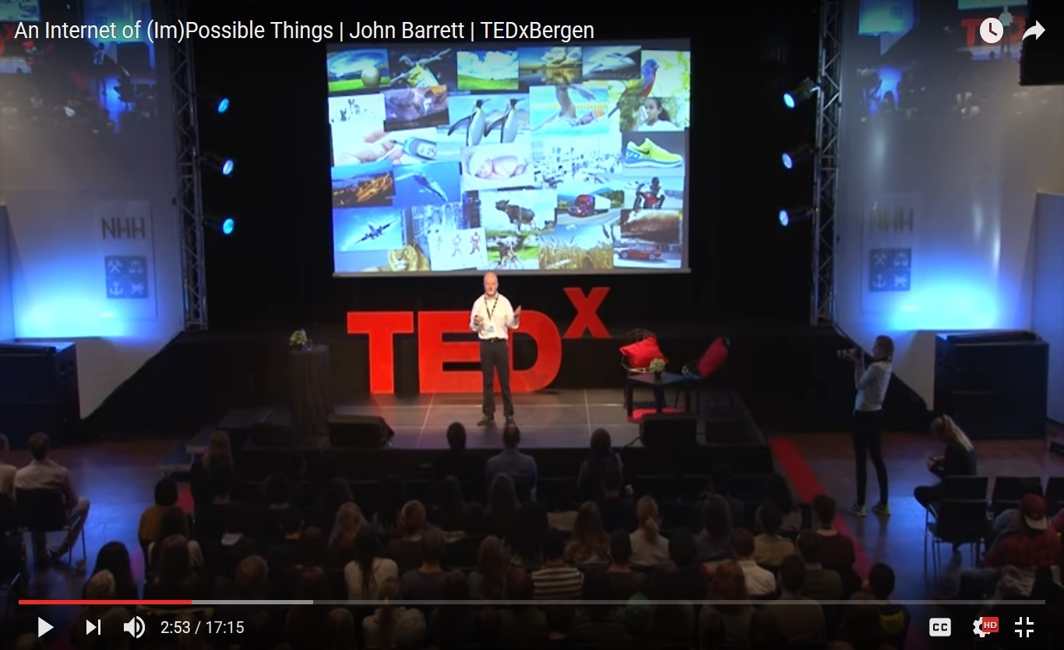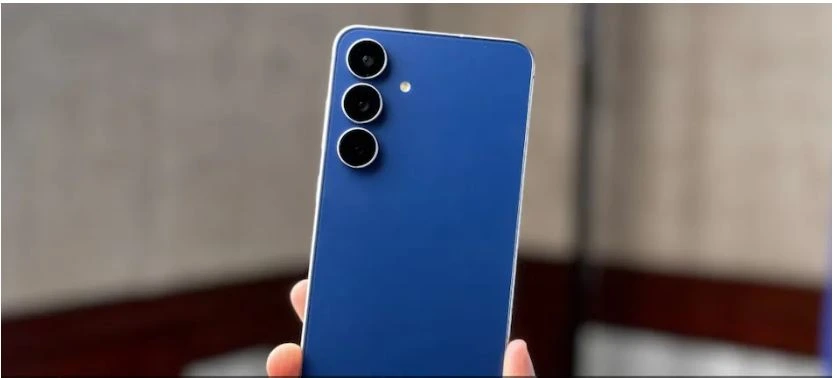[vc_row][vc_column][vc_column_text]Only two decades ago, we used voluminous PCs squatting in computer labs which were susceptible to dust and had to be visited without ones shoes on. Now the number of internet users in India is set to cross the 450 million mark this year.
~By Shailaja Paramathma
The surreal way in which the extraterrestrial beings in the movie Avatar can connect and talk to animals and trees around them and also establish contact with their ancestors will become a reality on earth soon. Through the Internet of Things (IoT), we too will be able to communicate with every physical thing around us and also be able to access memories (essentially data) from all over the world. IoT will allow physical things to sense, interact, collaborate and communicate with other physical things, without needing human-to-human or human-to-computer interaction. The best part is, unlike in Avatar, you wouldn’t even need a creepy looking thing sticking out the end of your braid to connect; an IP address, a smart chip and a WiFi connection will do the job.
It is no surprise then that the pundits of Internet of Things make pretentious sounding claims that “soon your refrigerator may know more about your diet than your doctor,” or your pacemaker can send information to the manufacturer for its own replacement. They also point out that the microchip present in the pacemaker can seek appointment with your cardiologist for the operation, after gleaning your availability from your calendar, of course, and inform you of the date of your operation via a notification to your smart phone.
Evolution of technology
As smart chips become smaller and cheaper, they will be embedded in more and more objects that we purchase or use. These chips will have sensors that will send, receive and exchange data with each other without the help of a human hand, creating a virtual network of physical things. The “thing,” in the Internet of Things then simply can be anything that can be assigned an IP address—a person with an implant, an animal with a biochip sensor, an automobile that drives itself or any other natural or man-made object. Thereafter, every stimulus picked-up by these sensors will be uploaded on to the internet, ready for data-mining by governments and industries.
In other words, if a heart-rate monitoring bracelet that you wear senses that your blood pressure is above normal every morning but still your fridge says it is loaded with red meat and white bread, the bracelet can send a mail to your dietician asking what you should eat and order fresh blueberries from the store for your breakfast smoothie the next morning.
This infinite and incessant flood of data will be stored in a digital cloud which will be around 4000 Exabytes in size. Dr John Barrett, Head of Academic Studies at the Nimbus Centre for Embedded Systems Research at Cork Institute of Technology, explains in a TEDx talk that this cloud will be “roughly equivalent to a stack of books from Earth to Pluto and back, eighty times over.” Such data storage capacities are enough to send compulsive hoarders into frenzy. And as, after social media, the next big thing will be data, naturally, the bottomless data mining opportunity that IoT will open up will make the Aadhaar card debacle look like a minor mishap.
Scope of the matter
Internet of Things will provide e-health, tele-medicine, remote diagnostics and monitoring. It will also serve early warnings for tsunamis, earth quakes or other natural disasters. It would search tagged objects so you would never have to lose a key or your time searching for it. It will give exhaustive information about a product that you are going to buy. It will also tell you about the quality of food you are going to eat as well as where it was grown and how. You will be able to not just track the goods you have ordered, as is possible now but also know the conditions under which they are travelling at any given point, thanks to the sensor riding on the back of your ordered product. This would be particularly useful for transporting food items, medicines, vaccines and especially donor organs. IoT will also aid in traffic management and routes your car can automatically choose from in case of an accident or an Indian marriage procession that claims the road, the footpath and everyone on it. It will also help governments responsibly manage natural resources and see that energy is used wisely. For example, the thermostat on your air-conditioner will not only control your room’s temperature but also know if you are present in the room. It will track your preferred temperatures over a period of time and give you the needed output while minimising your consumption.
All this sounds great because we can look forward to our days planned seamlessly by digital personal assistants, while we can cherry-pick our way through life. But what will happen to our privacy if information on everything we order, use or misuse is available online? How safe are we when all our behavioural patterns and habits are tracked and recorded and stored in an ever-growing data-sheet? Mir Shuja Amin, programmer at Jammu and Kashmir Lakes and Waterways Development Authority answers: “We have already surrendered our data. To what extent we are exposed is just a detail, determined by the level of our connectivity. Technically, it becomes possible to breach your data from the moment you log on to the net.” He asks rhetorically: “Would you put important files in a cupboard which had a great locking system up front but is open from the back? However, you do just that when you share things online, with your privacy settings and illusions of a strong password.”
As we will use the technology of IoT, our demand for greater security will increase, making data encryption a critical aspect for consumers to check before buying a product or service. Also, taking the time to read the terms and conditions of use of a site or a product will become necessary burdens which will help dig-up what the corporate lawyers will skilfully try to hide. Amin says: “As long as a company is loyal to its customers, you are safe. In 2016, Apple refused to share the data from the iPhone used by one of the shooters in the San Bernardino incident in America; they even got into a deep confrontation with the FBI. Black Berry was once the safest phone. Then one day they took back the encryption they provided. That’s when they failed. But as innovations happen, the sensors that will be used will also evolve, so there is hope,” he adds optimistically.
Smart phones, smart homes and smart cities sound like a plot from a sci-fi movie but these are on their way to becoming our reality. The Indian internet service provider-Videsh Sanchar Nigam Limited (VSNL), launched public Internet access in India on August 15, 1995. From then to now, the advancements that the technology has made is for all to see. Only two decades ago, we used voluminous PCs squatting in computer labs which were susceptible to dust and had to be visited without ones shoes on. Now the number of internet users in India is set to cross the 450 million mark this year. The next 20 years will see geekdom and technology flourish as it would be possible for every person to be connected to up to 5000 everyday things via the internet. These services will become so much a part of our lives that soon a time will come when we may not have the possibility to opt-out of using them.
Seeing red!
What will happen if at such a time a crash takes place or if a virus like the Ransomware attacks? Amin elucidates with an example: “Look at the number of people who use internet banking regularly today, they are not many and yet we sparingly visit our banks. Imagine the scenario when banks will go fully online, the services will be better, more secure and you will get over your hesitation and use them all the time for everything. Soon, a time will come when you will stop going to the bank altogether. You will not even care to know where it is physically located or know how to get things done with a physical form or a cheque. Now picture the chaos that will ensue if the systems then malfunction.” As for the possibility of a cyber crime, Amin says: “You may have switched off your smart TV but how can you be sure it’s really off? What if its camera has been compromised and it is still recording? TVs are often kept in our bedrooms, right?” he pointedly questions.
Just last week Heathrow airport in London suffered a “global system outage.” Flights were cancelled, bags went missing, mobile apps failed, and as the British Airways follows a cashless system, transactions halted as card machines stopped working. Around the world planes were grounded and passengers were stuck either inside the terminal or on the planes. A shortage of available gates also meant that incoming passengers had no opportunity to disembark. And those stranded at the airport were being charged exorbitant rates by the nearby hotels for a night’s stay.
The fact is, big businesses care about IoT to the tune of billions of dollars. Companies like Cisco, Samsung, GE and Google have invested in the technology along with the governments of many countries. In India, as reported by the Economic Times in February 2017, the leading audit company, Deloitte, predicted that Internet of Things units are expected to see a rapid 31-fold growth and that the market value of IoT is expected to reach $9 billion in India by 2020.
With IoT, our behaviour and preferences will be recorded and this data will be available to whoever pays the price to buy it. So, when you go to get your car insured, the insurance company will know how good or bad a driver you are and that might reflect in the price they name for the premium you pay. Heaven forbid, if you have the habit of opening your car door while driving, to spit paan on to the road like a true-blue paan connoisseur and that’s when you get into an accident, you will not be able to falsely accuse someone else for it because the insurance company will know.
Fiction and the reality
Scottish writer Iain M. Banks wrote a number of space opera novels and short fictions collectively called the Culture series. In the series, “The Culture” is a utopian society without any scarcity; it is egalitarian, individualistic and also stable. Force is used only to protect people and not to hurt them and a network of artificial intelligence that looks after everyone’s needs and manages resources sees to it that there is no more cause for any kind of strife.
But Amin does not view the future in the same way, he says: “Something like that is fun to write and to read but it’s a fiction, whereas smart city is a possible concept. However, it is also like going to school, you can only know bit by bit that you don’t like History.”
Will being connected to everything at all times and having an overload of information gradually make us indifferent to knowledge? Maybe you think there is the danger of us becoming utterly useless like the characters in the movie Wall-E after they have handed over all controls to technology. All of this is possible, but while you mull over the prospect helplessly, watch how companies are already selling the idea of IoT for industries, making the technology seem not so futuristic or alien but easy and exciting. Here is a 2014 GE commercial, called “The boy who beeps.”
As for those of you who are suspicious of technology and are vowing to never fall into its enticing trap, know that this is the future. And unless you learn to change and adapt, it is going to feel like existing between a rock and a hard place. For your information, resistance will only make you feel progressively squeezed.[/vc_column_text][/vc_column][/vc_row]


 India News9 hours ago
India News9 hours ago
 India News11 hours ago
India News11 hours ago
 Entertainment7 hours ago
Entertainment7 hours ago
 India News13 hours ago
India News13 hours ago
 India News13 hours ago
India News13 hours ago
 India News7 hours ago
India News7 hours ago
 Latest world news6 hours ago
Latest world news6 hours ago
 India News8 hours ago
India News8 hours ago




